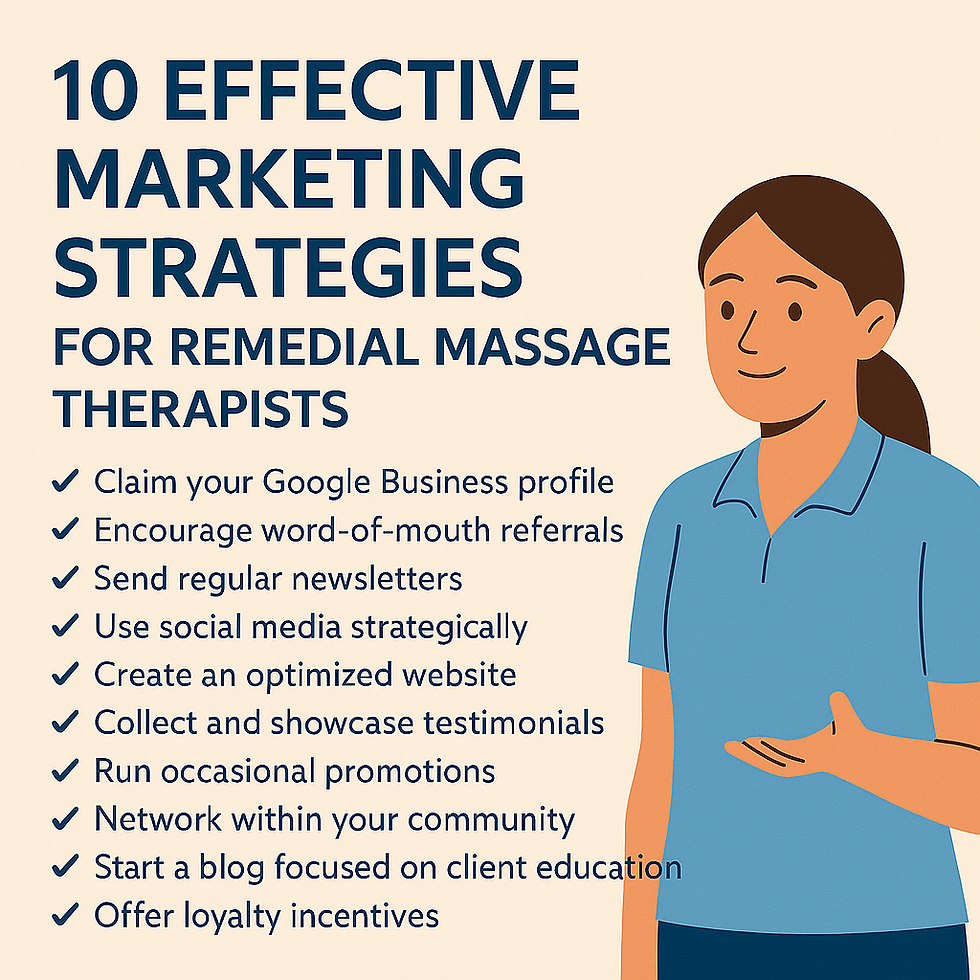Strategies for Work-Life Balance in Massage Therapy
- TheTherapyWeb.com

- May 22
- 2 min read
Balancing a Fulfilling Career Without Burning Out. Strategies for work-life balance massage therapy
The manual therapy profession is deeply rewarding—but also physically and emotionally demanding. Whether you're a remedial massage therapist, myotherapist, or Bowen therapist, finding effective strategies for work-life balance in massage therapy is essential for long-term wellbeing and career sustainability.
With growing pressure to meet client needs, manage your own business, and keep up with continuing professional education (CPE/CPD) requirements, it’s no surprise that many therapists are seeking smarter ways to protect their energy while staying professionally engaged.

1. Set Boundaries Around Your Time
One of the most practical strategies for work-life balance in massage therapy is learning to set clear working hours—and stick to them. This applies to appointment slots, admin time, and communication boundaries (like responding to texts or emails only during certain hours). Burnout often begins when availability becomes endless. Protecting your non-work time makes you a better therapist in the long run.
2. Embrace Online Learning to Reduce Stress
Professional development is essential, but it doesn’t need to be draining. Online CPE/CPD courses allow you to stay compliant and expand your clinical knowledge—without sacrificing evenings or weekends to in-person workshops. For many manual therapists, digital learning options create breathing space, helping them maintain their work-life balance in massage therapy more effectively.
3. Prioritise Self-Care Like You Recommend It
We tell clients to stretch, hydrate, move, and rest—but are you doing the same? Your body is your primary tool. Make space in your weekly routine for recovery activities, whether that’s your own massage, a gym session, or quiet time away from screens. Incorporating self-care isn’t indulgent—it’s a professional necessity.
4. Review Your Client Load Regularly
Therapists often feel pressured to fill every available hour. But constantly working at full capacity can erode your ability to enjoy your work or be present with clients. Evaluate whether your schedule is supporting your health, income, and goals. Adjusting your hours, raising rates, or focusing on higher-value services may be more sustainable long-term.
5. Connect With Peers and Stay Inspired
Isolation can be a hidden contributor to burnout. Peer connection—whether through local networks, professional associations, or online communities—can bring perspective, inspiration, and emotional support.
Balance Is an Ongoing Practice
There’s no one-size-fits-all answer, but by applying thoughtful strategies for work-life balance in massage therapy, you can build a practice that serves both your clients and your wellbeing. Continuing to grow professionally doesn’t mean overextending yourself—it can be part of the solution. If you’re looking for flexible, evidence-informed online CPE courses tailored to manual therapists, we invite you to explore what’s available at TheTherapyWeb.com.






Comments